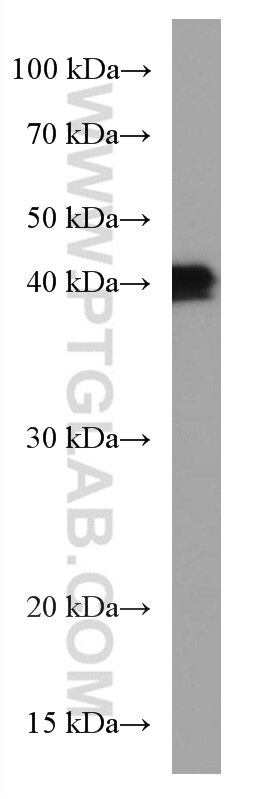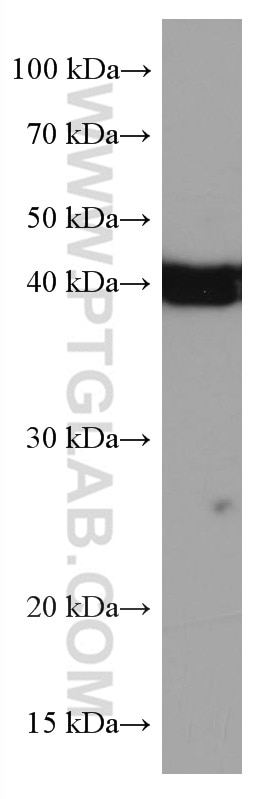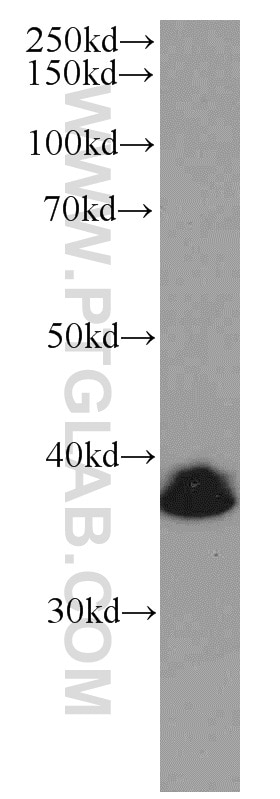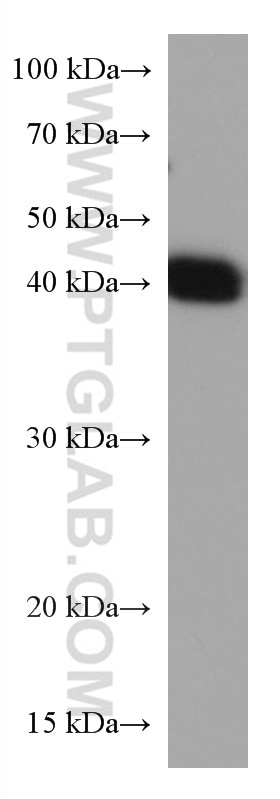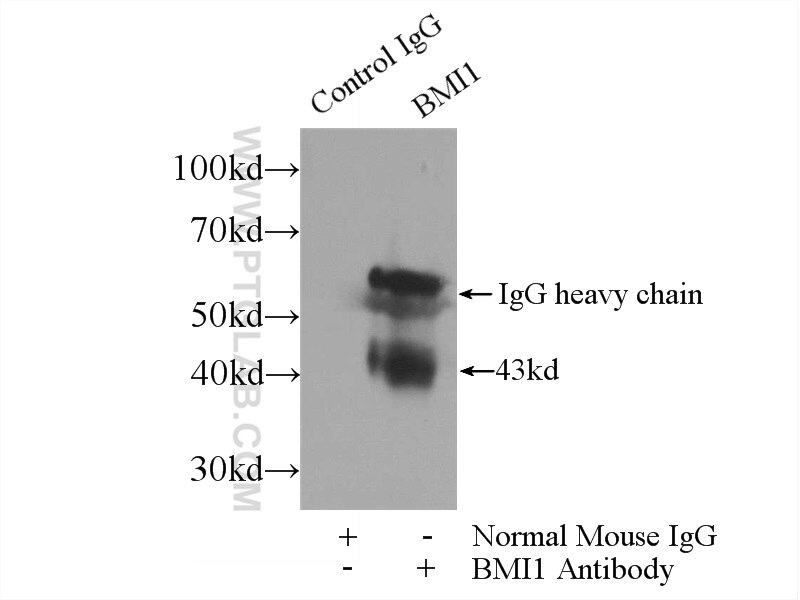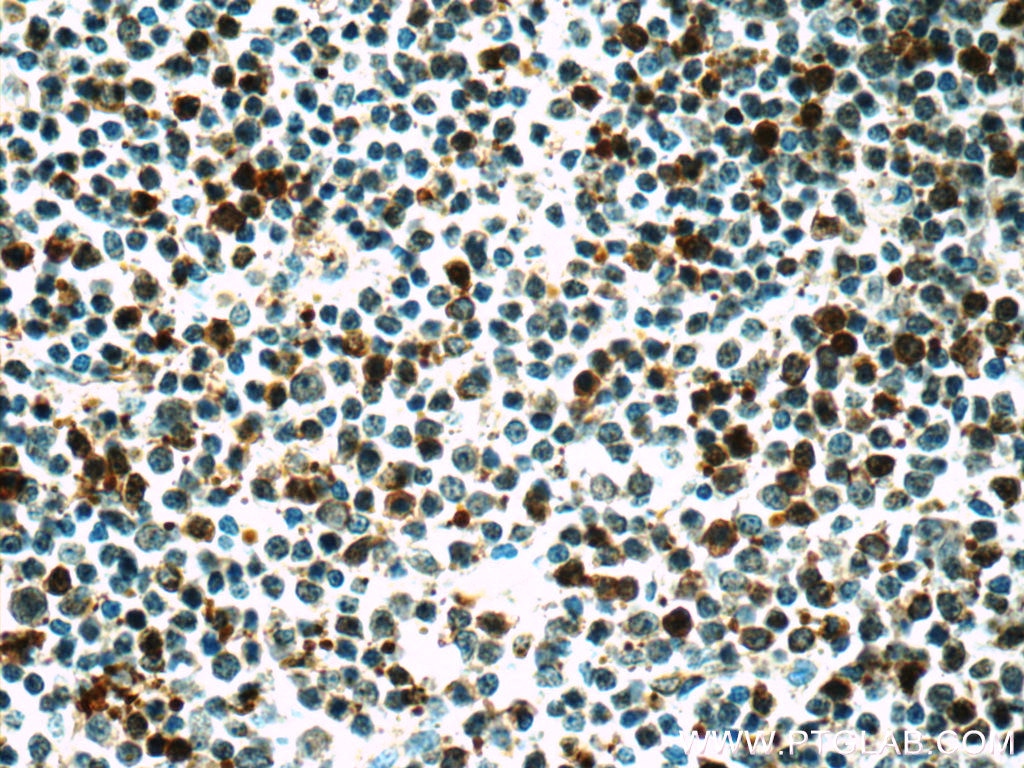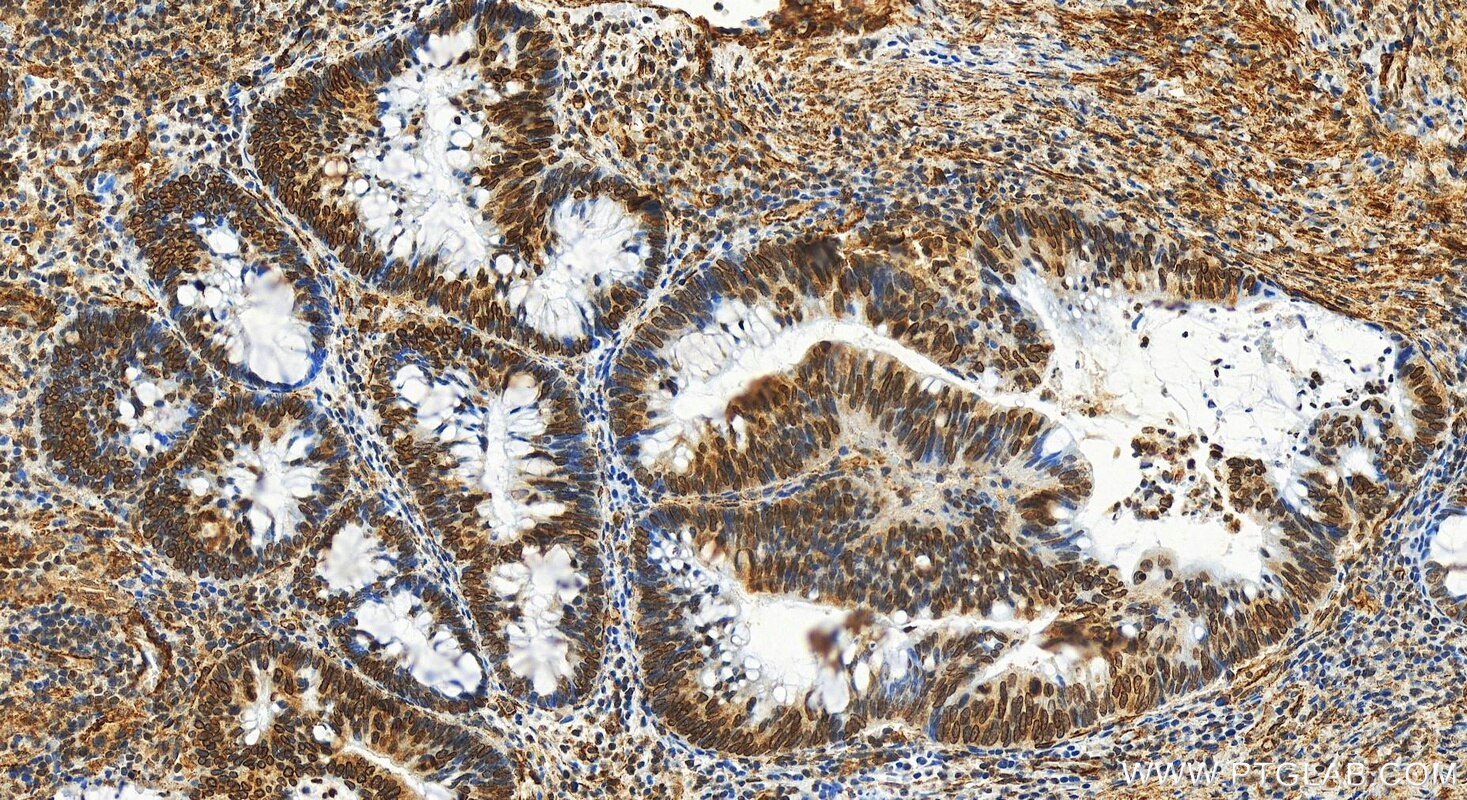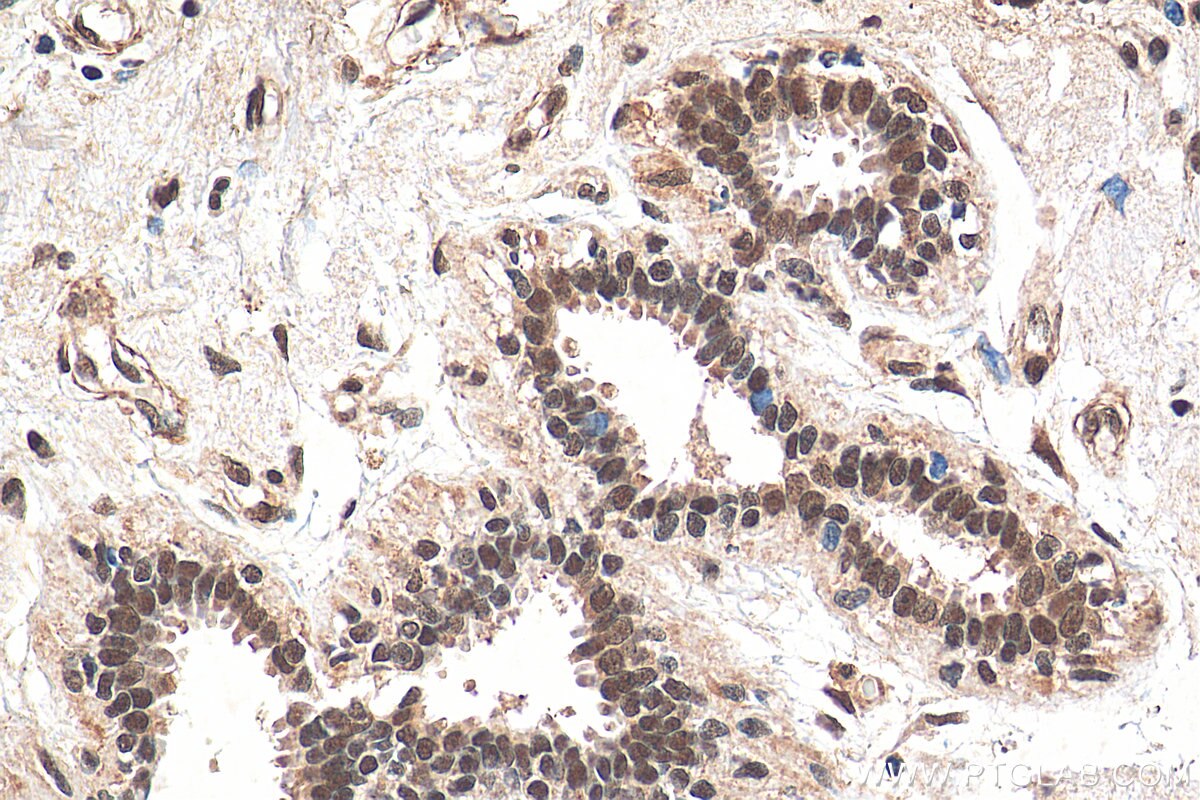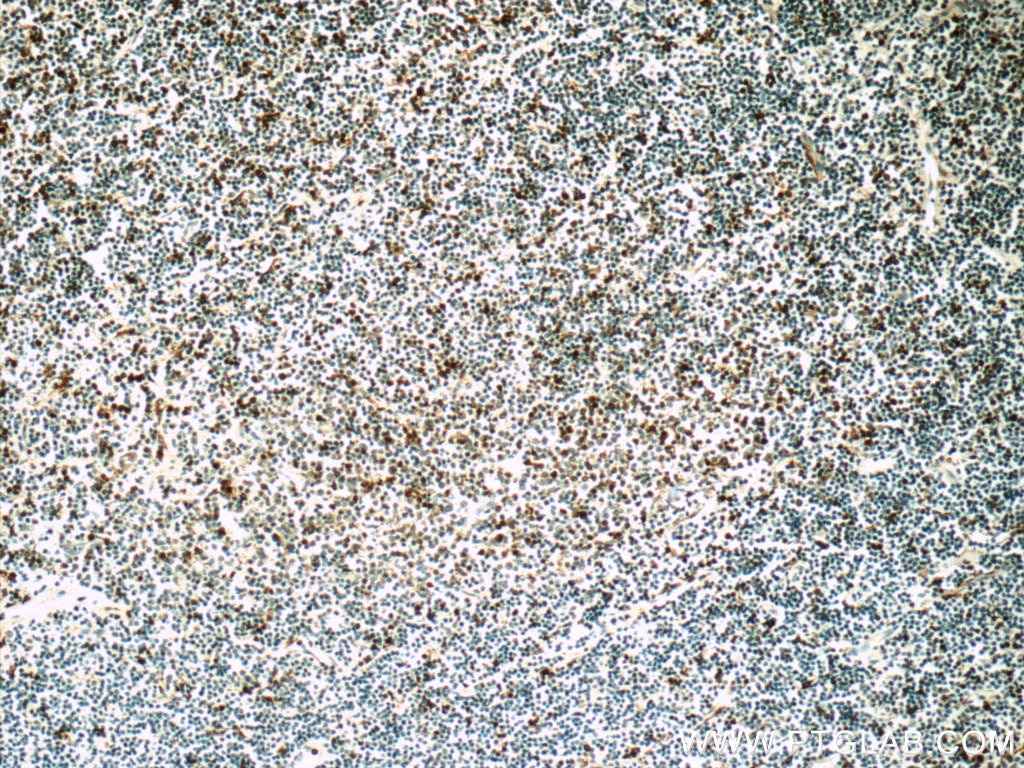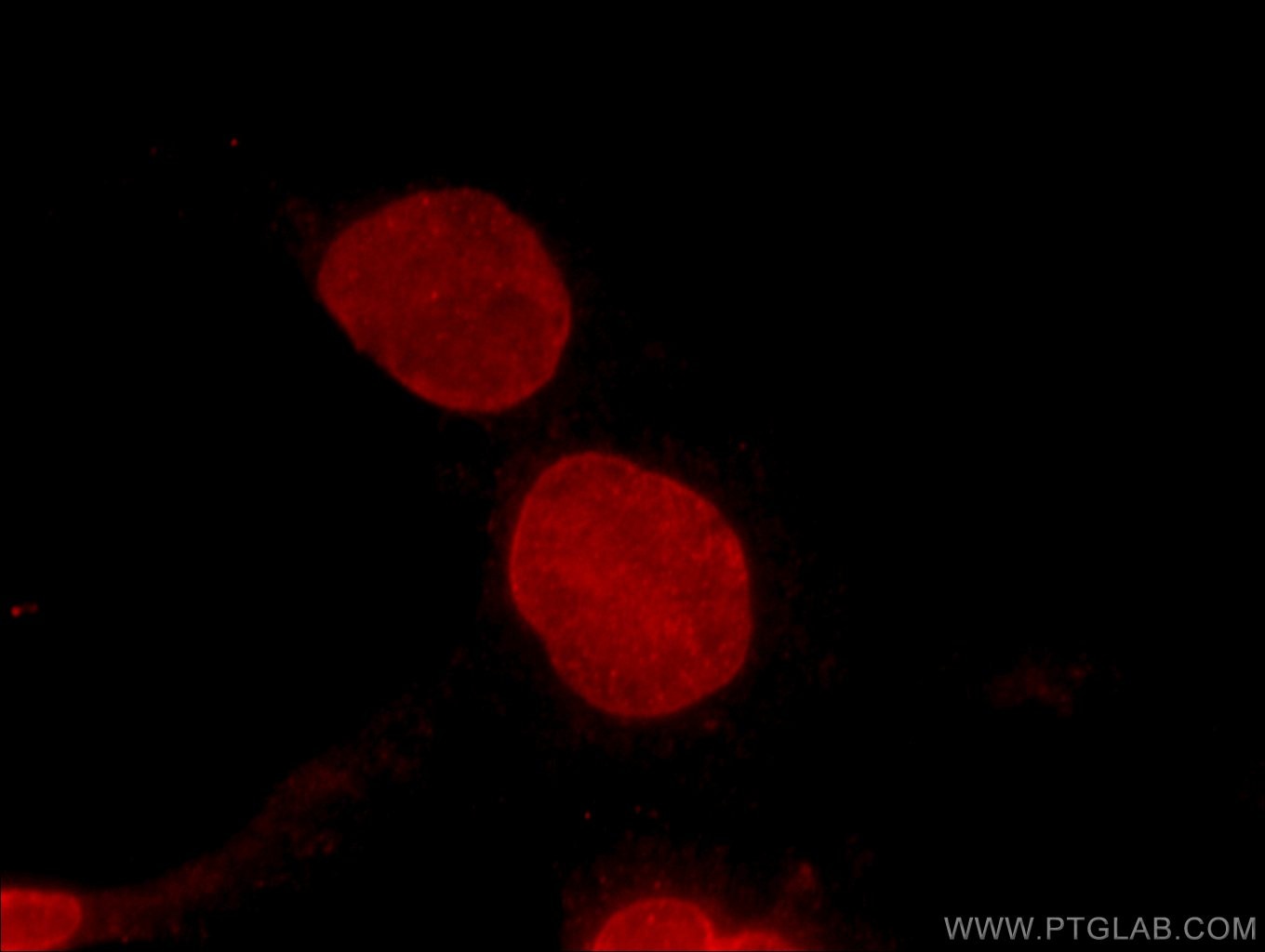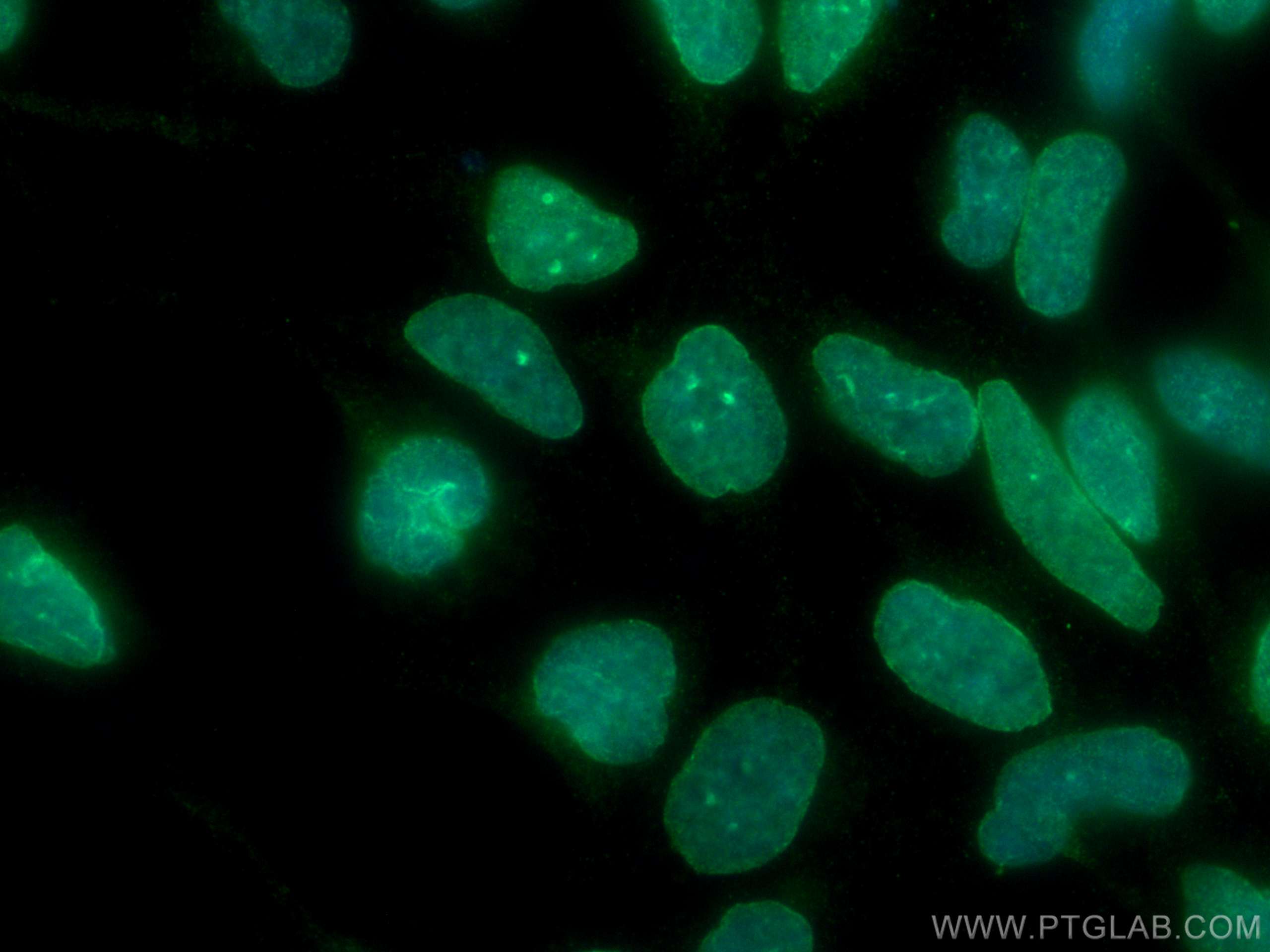- Phare
- Validé par KD/KO
Anticorps Monoclonal anti-BMI1
BMI1 Monoclonal Antibody for WB, IHC, IF/ICC, IP, ELISA
Hôte / Isotype
Mouse / IgG2b
Réactivité testée
Humain, singe, souris
Applications
WB, IHC, IF/ICC, IP, ELISA
Conjugaison
Non conjugué
CloneNo.
2E10A11
N° de cat : 66161-1-Ig
Synonymes
Galerie de données de validation
Applications testées
| Résultats positifs en WB | cellules PC-12, cellules HT-1080, cellules U2OS, cellules U-937 |
| Résultats positifs en IP | cellules HEK-293 |
| Résultats positifs en IHC | tissu de cancer du sein humain, tissu de lymphome humain il est suggéré de démasquer l'antigène avec un tampon de TE buffer pH 9.0; (*) À défaut, 'le démasquage de l'antigène peut être 'effectué avec un tampon citrate pH 6,0. |
| Résultats positifs en IF/ICC | cellules HEK-293, cellules COS-7 |
Dilution recommandée
| Application | Dilution |
|---|---|
| Western Blot (WB) | WB : 1:1000-1:4000 |
| Immunoprécipitation (IP) | IP : 0.5-4.0 ug for 1.0-3.0 mg of total protein lysate |
| Immunohistochimie (IHC) | IHC : 1:50-1:500 |
| Immunofluorescence (IF)/ICC | IF/ICC : 1:500-1:2000 |
| It is recommended that this reagent should be titrated in each testing system to obtain optimal results. | |
| Sample-dependent, check data in validation data gallery | |
Applications publiées
| KD/KO | See 2 publications below |
| WB | See 12 publications below |
| IHC | See 4 publications below |
| IF | See 4 publications below |
Informations sur le produit
66161-1-Ig cible BMI1 dans les applications de WB, IHC, IF/ICC, IP, ELISA et montre une réactivité avec des échantillons Humain, singe, souris
| Réactivité | Humain, singe, souris |
| Réactivité citée | Humain, souris |
| Hôte / Isotype | Mouse / IgG2b |
| Clonalité | Monoclonal |
| Type | Anticorps |
| Immunogène | BMI1 Protéine recombinante Ag21284 |
| Nom complet | BMI1 polycomb ring finger oncogene |
| Masse moléculaire calculée | 37 kDa |
| Poids moléculaire observé | 37-43 kDa |
| Numéro d’acquisition GenBank | BC011652 |
| Symbole du gène | BMI1 |
| Identification du gène (NCBI) | 648 |
| Conjugaison | Non conjugué |
| Forme | Liquide |
| Méthode de purification | Purification par protéine A |
| Tampon de stockage | PBS with 0.02% sodium azide and 50% glycerol |
| Conditions de stockage | Stocker à -20°C. Stable pendant un an après l'expédition. L'aliquotage n'est pas nécessaire pour le stockage à -20oC Les 20ul contiennent 0,1% de BSA. |
Informations générales
BMI- 1 is one of polycomb group genes, which together with Ring1 strongly enhances the E3 ubiquitin ligase activity of the Ring2 catalytic subunit. Bmi1 plays an important role in the regulation of cell proliferation and senescence through repression of the p16Ink4a and p19Arf genes and is required for maintenance of adult hematopoietic and neural stem cells. The antibody reacts with the 37kd BMI1 protein.
Protocole
| Product Specific Protocols | |
|---|---|
| WB protocol for BMI1 antibody 66161-1-Ig | Download protocol |
| IHC protocol for BMI1 antibody 66161-1-Ig | Download protocol |
| IF protocol for BMI1 antibody 66161-1-Ig | Download protocol |
| IP protocol for BMI1 antibody 66161-1-Ig | Download protocol |
| Standard Protocols | |
|---|---|
| Click here to view our Standard Protocols |
Publications
| Species | Application | Title |
|---|---|---|
Dev Cell Nucleoporin Seh1 controls murine neocortical development via transcriptional repression of p21 in neural stem cells | ||
Clin Transl Med Bmi-1-RING1B prevents GATA4-dependent senescence-associated pathological cardiac hypertrophy by promoting autophagic degradation of GATA4. | ||
J Bone Miner Res Bmi-1 Overexpression Improves Sarcopenia Induced by 1,25(OH)2 D3 Deficiency and Downregulates GATA4-Dependent Rela Transcription | ||
Aging (Albany NY) Identification of a mesenchymal-related signature associated with clinical prognosis in glioma. | ||
Mol Cancer Ther Evaluating the Mechanism and Therapeutic Potential of PTC-028, a Novel Inhibitor of BMI-1 Function in Ovarian Cancer. |
